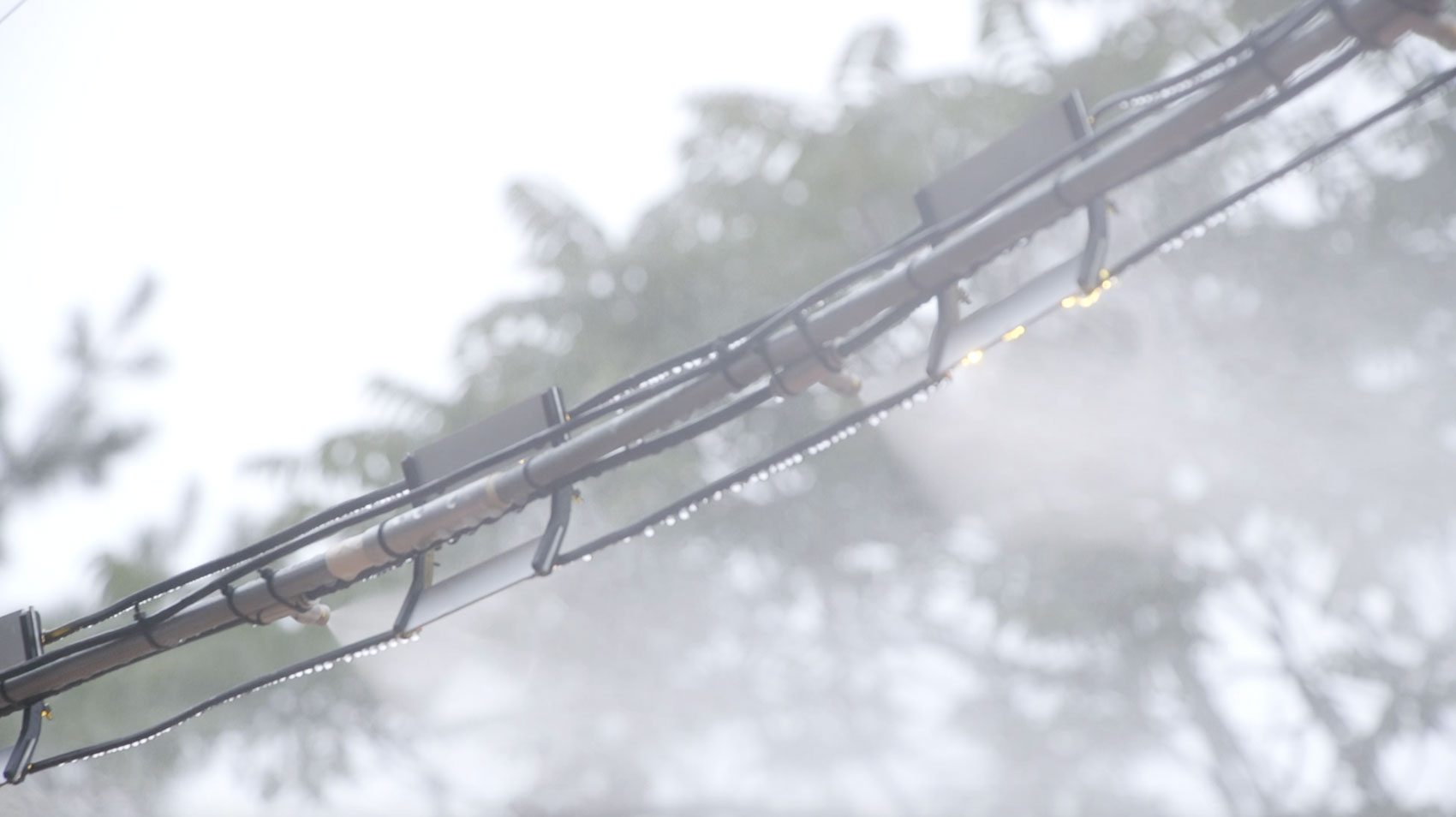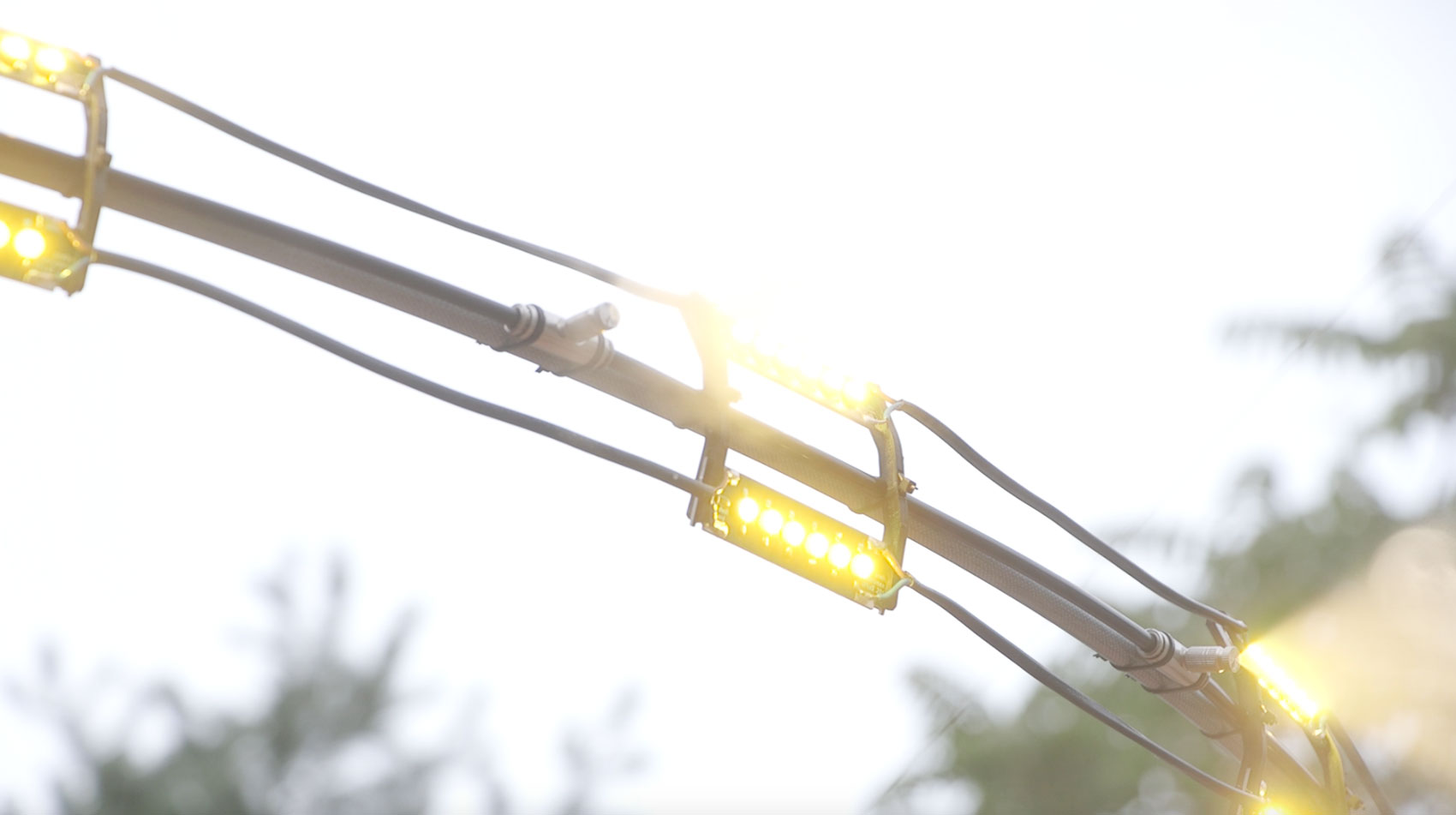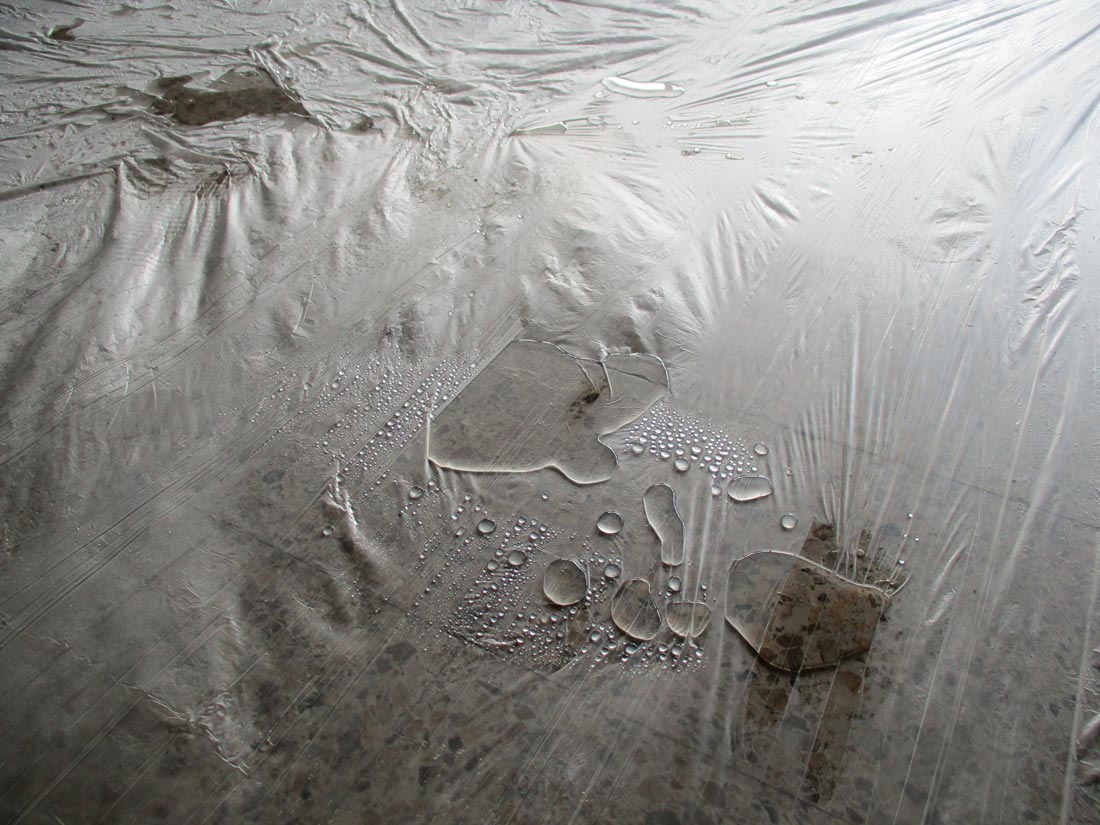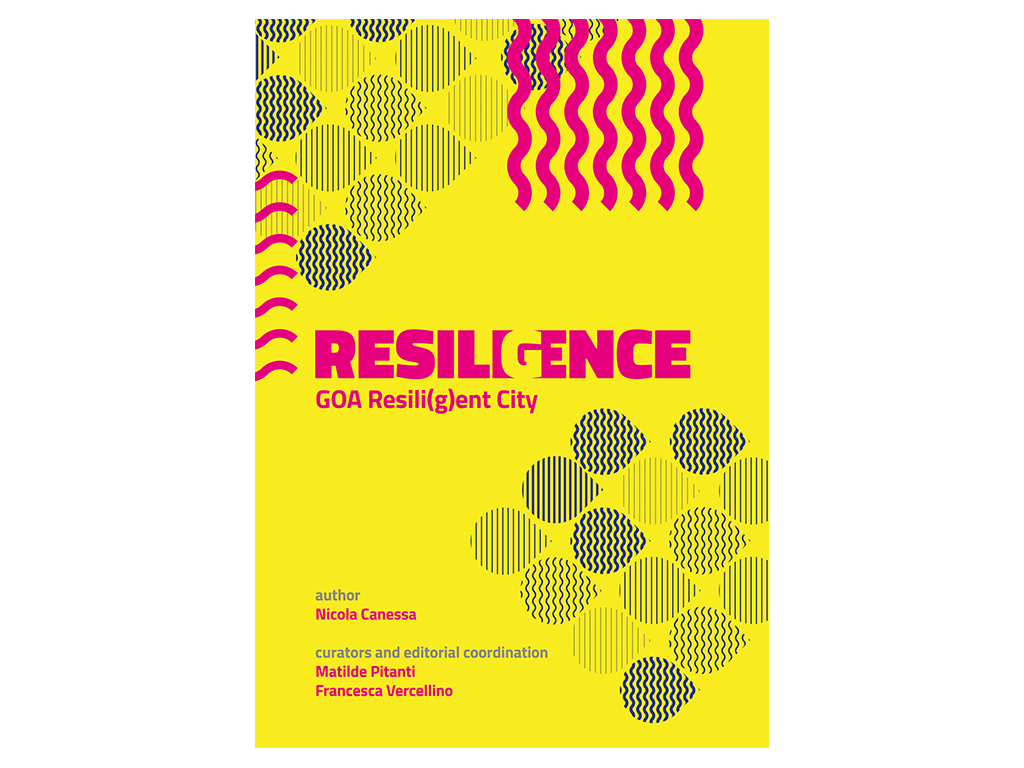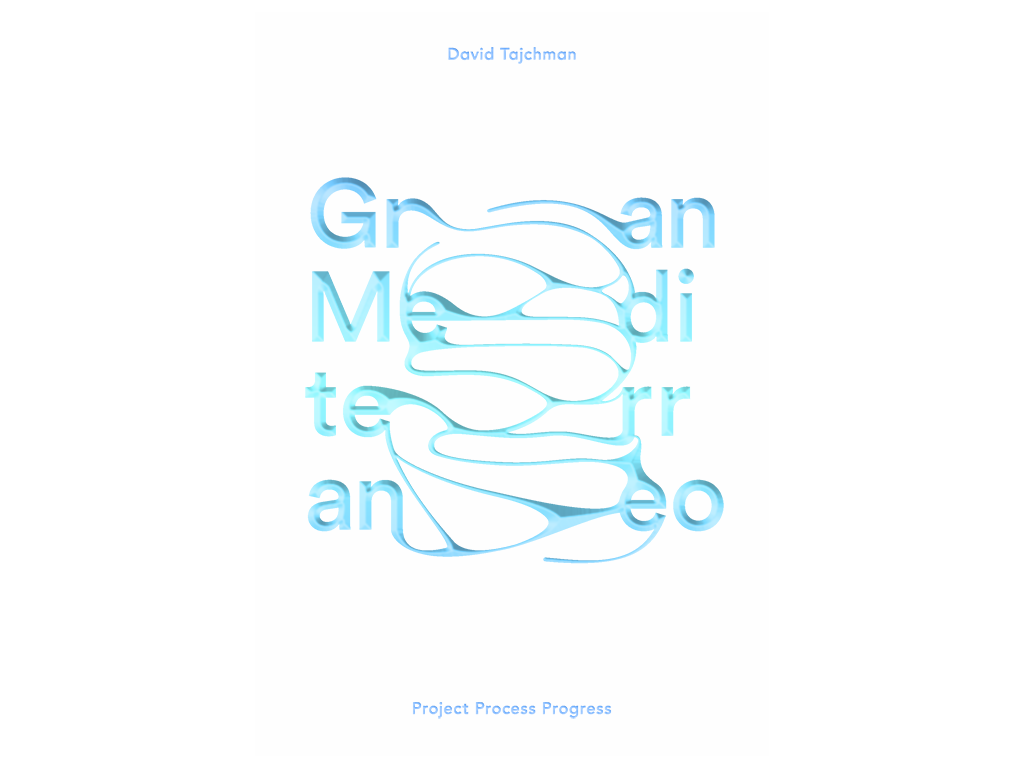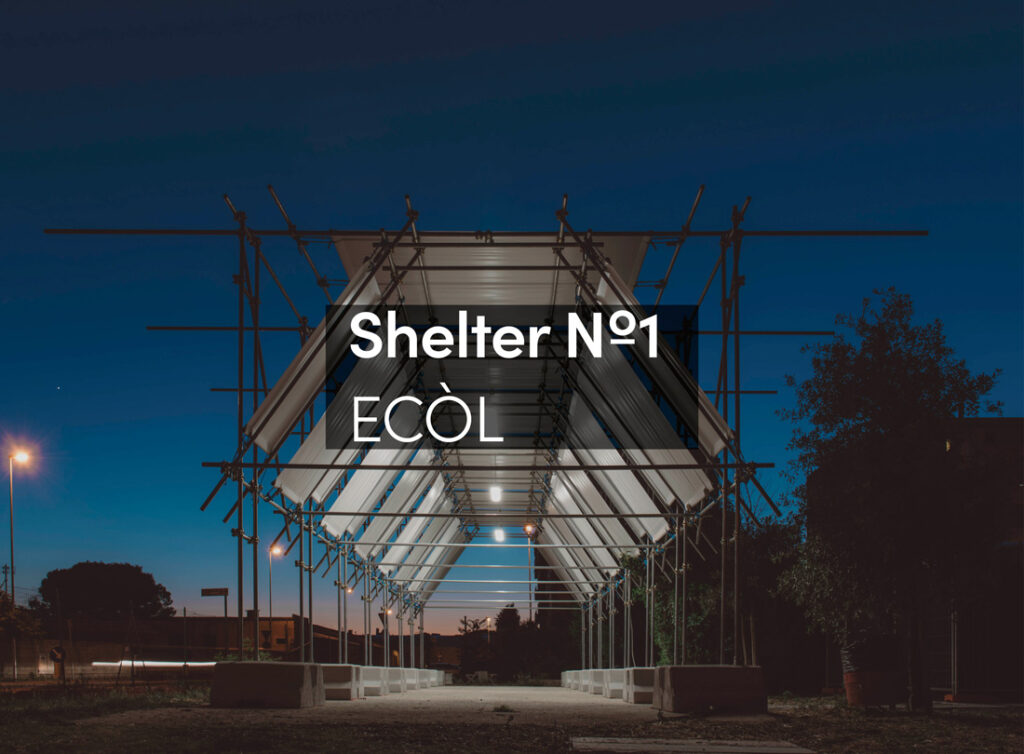Yellow Dust is a three-dimensional water vapour canopy that provides information about air pollution and, more specifically, about particulate matter (PM 2.5). Drawing on architectural references like Diller and Scofidio’s Blur Building (2002), it is made of fog and is reactive to meteorological changes. It is also an inhabitable and media infrastructure, with a fundamental difference from the Blur Building: the media is not meant to be a display of art or information, but to reveal its own constitution and experience data. In this sense it relates to Philippe Rahm Architecte’s Jade Eco Park in Taiwan (2005- ) in its intention to condition the public space, as well as to Living Light, The Living’s pavilion in Seoul (2009), relying not only on vision, but also exploring less representational and more experiential modes of dealing with knowledge and information.
Yellow Dust’s canopy generates a floating misty environment that changes density (and therefore the conditions of visibility, humidity, etc.) in relation to the concentrations of particulate matter in the air. It performs counter-intuitively, almost paired with the visual conditions of the dust: the more dust, the thicker the cloud, embracing and intensifying the blurriness of our contemporary cities, where the transparency of the modern movement cannot be achieved anymore.
The data is collected by two self-made DIY sensors, which provide alternative data to the Seoul Metropolitan Government. The reason for using DIY sensors, instead of getting the data from the closest official monitoring station, is to test the remediation capacity of the cloud, because as water sediments dust, it may reduce the concentrations of aerial particles. Thus, one sensor is above the cloud and the other below it, at ground level. The main objective is to explore forms of engagement with the toxic air alternative to existing monitoring practices, by paying attention to and speculating about other conditions of the air.
But, what do we need to know about air pollution in the city, as passers-by, neighbours, and architects? Yellow Dust suggests other aspects of the air that deserve attention. It moves from numbers to intensities of water vapour, showing the changes of particle concentrations by other means. The decoding of the information is therefore not immediate, and it may take time for passers-by to be able to compare the conditions of the mist with those of previous hours or days. It requires time to get to know it, detaching from speed of information tropes.
The intensities do not relate to the Air Quality Index, either. The Air Quality Index (AQI) is a colour gradient that correlates the concentration of particles with their effect in human health. There are two reasons for avoiding this relation. First, the project is part of wider research that aims to find other modes of attending to the air beyond human health. This is not to say that human health does not matter. It takes into consideration that every body— human or not—reacts to pollution differently. So, from a cosmopolitical approach, to account for all bodies and their diverse sensitivities to particles, it does not specifically address any of them. Each body might get used to or attuned to the infrastructure, or learn to be affected by it. Second, it is not clear what role human health plays when informing citizens in real-time at a specific location. As AQI advises when to stay indoors, if displayed at a specific location it could reduce the quantity of passers-by, for instance, and put local commerce at risk and therefore threaten other aspects of human life, affecting the less privileged people.
It is relevant to note at this point that the project is not focused on prediction. It reacts to positivist understandings of information, where knowledge produces immediate behavioural change. This is because studies of the impact of air pollution data on citizens have demonstrated that information does not necessarily produce behavioural change. Therefore, the project aims to find alternative modes of engaging with the environment beyond the cognitive, by being attuned to toxicity, recognizing, or detecting it.
The colour of the fog also plays a role in paying attention differently; in this case, it helps to identify and locate oneself within conditions that are simultaneously local and planetary. It is coloured yellow in reference to the Yellow Dust (Hwangsa in Korean), transboundary fine soil particles carried by the wind from Mongolia and Northern China, mostly during the spring, which bring with them other types of industrial pollutants. Although there are frequently high levels of particles created by local sources, Yellow Dust creates a sense of invasion, of matter out of place, which reinforces the distinction between local and foreign air, and triggers legal and political international battles. Which forms of intervention could be opened up that may not get trapped in colonial bias and forms of dealing with the other? Our installation unsettles the idea of the yellow dust as a foreign and unwanted entity, and reveals, in the months when Hwangsa is not blowing, whether there is pollution of local particles in Seoul’s atmosphere.
Other forms of knowing
Yellow Dust proposes an alternative form of getting to know the air. Currently, to get information about air pollution we need to look at digital devices, from mobile phones, to computers or even urban screens. Yellow Dust instead surpasses this mediation and displays air quality information right in the air, exactly where it has been measured. The project also expands other forms of sensing or experiencing environmental data that differ from those used by institutional monitoring systems based on vision. The water vapour creates a soft mist of humidity that can be experienced by breath and contact with the skin, which aims to democratise the perception of air pollution and to pay attention to the unevenness of its effects. Only sensitive bodies sense pollution, but it is likely that more bodies sense humidity. In days of high particle concentrations (Hwangsa or not), there are several modes of sensory overlap: visual (the colour of pollution, the colour of the mist), skin-based (through humidity and the temperature of the mist), and the nose, eyes, or lungs (for particle-sensitive bodies). Water vapour sometimes alleviates asthma symptoms, so the infrastructure may also serve as a relief. Overall, it produces an overlapping—or even excessive—sensorial experience.
Transforming environments
The fog not only alters human forms of sensing data, but conditions the urban space, changing its temperature and humidity conditions. This conditioning may also have other effects such as remediating particulate matter. As water deposits particles, water vapour may contribute to this process, reducing its concentrations. The installation is therefore an experiment in remediation that tests the decrease in particles from above and below the mist. This hypothesis is inspired by the old practice in many countries of watering the streets to reduce dust storms. Should we water parts of our cities? Could this be a coping strategy for highly polluted areas?
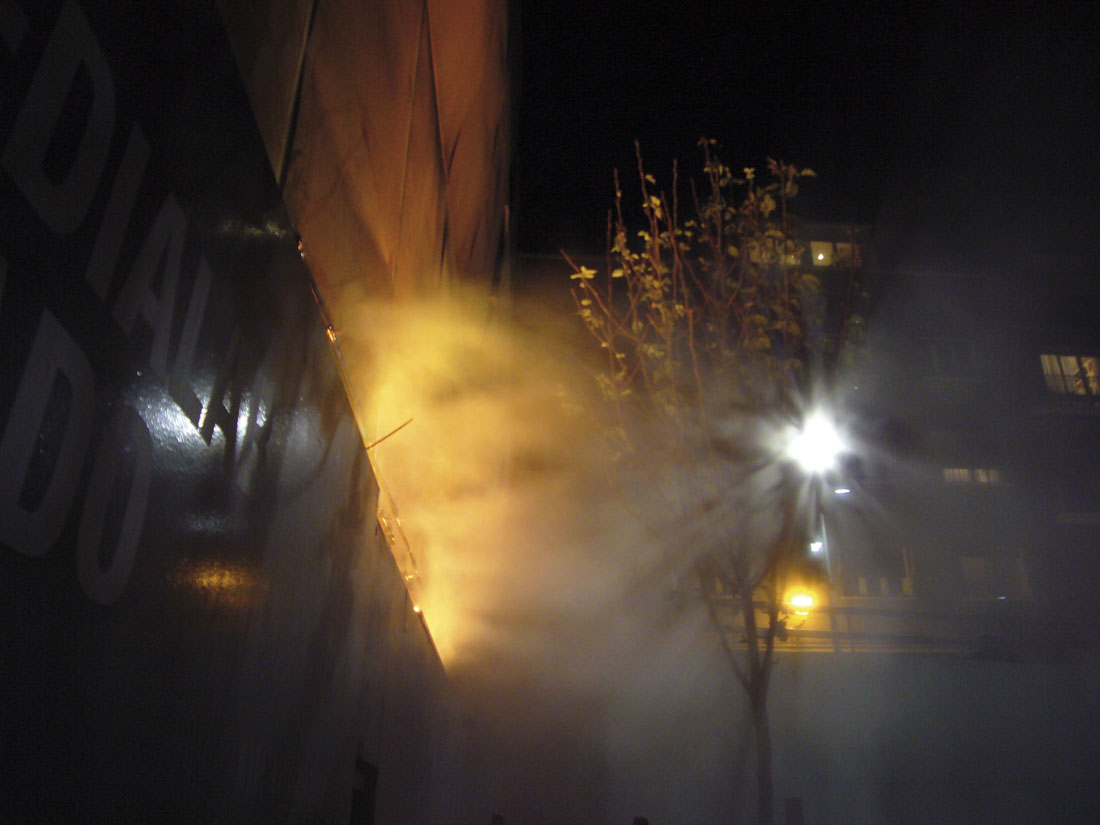 Urban infrastructures
Urban infrastructures
Yellow Dust is also a speculation on urban infrastructures. As a monitoring infrastructure, it measures and makes visible in the same place, right where the measured object is. It reveals its own infrastructure, the steel that sustains the water vaporisers, the sensors, the cables that channel the water, the lights, and so on, as opposed to scientific and policy-making versions of air monitoring devices, which are invisible and black-boxed. Yellow Dust has a visible infrastructure because one of the problems of ubiquitous systems is that their invisibility reduces our possibility of understanding their performance, and therefore our possibility of intervention. From an eco-systemic perspective, it also makes visible what it takes to monitor and display air pollution information, through water- and energy-consumption meters.
However, the main components of the installation are water vapour and data, distributed across space and time in an untraceable way. They create some sort of atmospheric media, bringing together technologies and urban conditions below the threshold of sensing. Media and the air become the same thing, elemental conditions that perform as a chemical interaction, as a milieu, and as an environment. From here we ask whether in this specific type of infrastructure, it is possible to distinguish between the technology and the matter that acts upon it, since the infrastructure and what is sensed cannot be disentangled, or indeed differentiated. The water vapour dissolves in the air, becoming one. So not only does the infrastructure become atmospheric, but it makes the air infrastructural too, by being the support of its own data, literally making itself visible.
